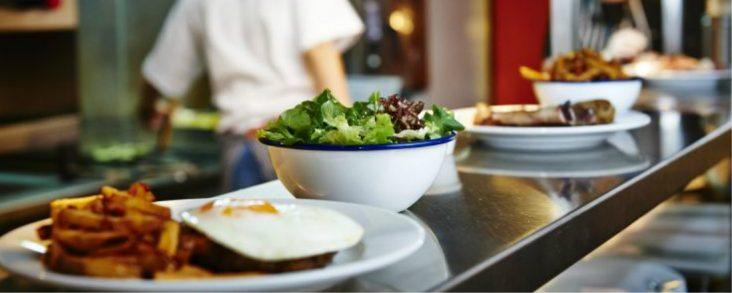Restaurant traffic continues to improve through August
by September 28, 2021 4:58 pm 853 views

Consumers continued to patronize restaurants online and in-person despite U.S. COVID-19 cases rising in August. NPD Group reports U.S. restaurant traffic increased 5% in August compared to a year ago, but the visits remain below the pre-pandemic period of August 2019.
“Overall, the state of the U.S. restaurant industry today reflects the steady state of the home-centric lifestyle that has us eating more meals at home,” said David Portalatin, NPD food industry adviser. “This behavior pre-dates the pandemic and will continue into the foreseeable future. To meet the needs of today’s restaurant consumers, restaurant operators need to think about getting meals and snacks into the home.”
While restaurant visits are improving overall, dine-in or on-premise traffic continues to struggle, the report found. Dine-in visits fell 34% in August compared to the same month in 2019. Off-premise orders, which gained ground during the pandemic, represented 73% of all restaurant visits in August. Delivery continued its meteoric growth, with orders increasing by 128% in August compared to the same month two years ago, and now representing 10% of off-premises visits, NPD reported.
A business area that continues to grow is carry-out orders. NPD said the segment holds a 49% share of off-premise traffic and is up 6% compared to pre-pandemic levels. Drive-thru visits rose 11% in August, compared to 2019, and represented 41% of off-premise visits. Although digital ordering has grown by triple digits since the pandemic began, non-digital orders still represent 85%, of all restaurant orders, NPD said.
Quick-service restaurants still represent the majority of U.S. traffic which was up 2% from a year ago, but still down 3% from August 2019, according to the report.

Meat and other commodity prices continue to rise. Wholesale boneless chicken prices are up 130% this week from the same week last year. Coffee rose 78% from a year ago. Turkey breast meat was 80% more expensive this week compared to the same period of 2020. Chicken wings are 69% more expensive year-over-year and sugar costs are up 47%. Corn is 41% more costly while beef is 29% more expensive at the wholesale level year-over-year, according to Stephens Inc. commodity report released Sept. 28.
Restaurants are also struggling to hire enough workers. McDonald’s is offering $500 sign-on bonuses to get workers and other restaurants like Chipotle and Raising Cane’s have raised minimum pay to draw in more workers. Jack Hartung, the chief financial officer of Chipotle Mexican Grill, said recently the employee shortage has created the most challenging labor environment in his long career. The company raised pay by $2 per hour this summer because it saw workers leaving to go elsewhere for $1 more an hour. He said the starting wage at Chipotle is about $15 per hour. He also said menu prices were raised between 3.5% to 4% in late summer to offset the higher labor costs.
Popeyes, Raising Cane’s and Zaxby’s recently closed dine-in options at select restaurants because of short staffing and the rise in COVID cases. The restaurants do not have the staff to sanitize dining rooms continuously so they opted to close them. The restaurants remain open for takeout via the drive-thru and they also work with third-party delivery services such as Uber Eats, Grubhub, and DoorDash.
McKinsey Group recently reported restaurants that choose to continue to serve dine-in and delivery customers will need to adapt pricing to cover delivery’s added costs. Some chains like Chipotle also have raised delivery app prices by as much as 13% in recent months.
